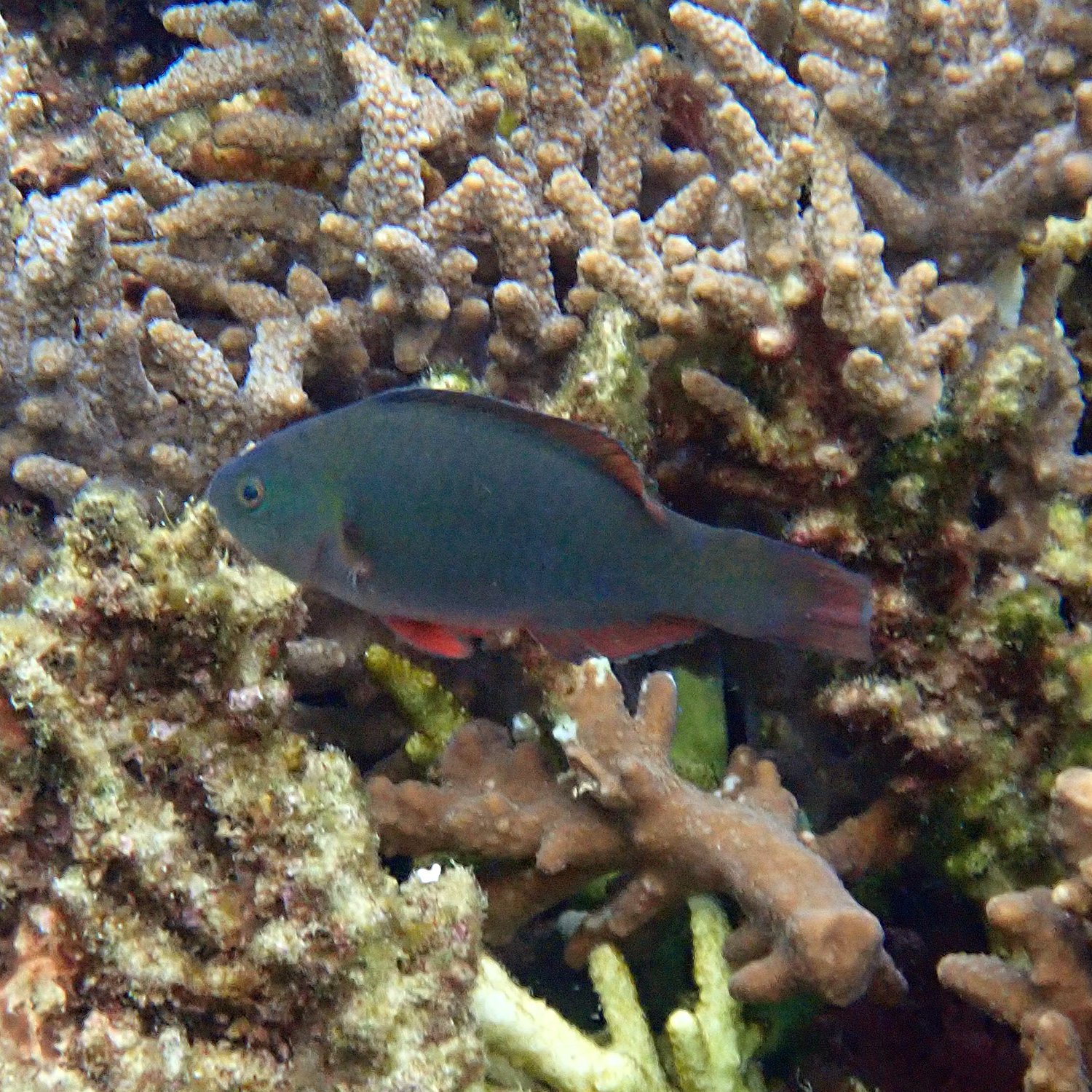Citizen science can be powerful. Let me explain why.
Sabre squirrelfish (Sargocentron spiniferum) spotted on 4 January 2023
In a recently released checklist of coastal fishes for Norfolk, Lord Howe and the Kermadec Islands, I was able to claim nine of the fish species from a (very) long list that are the first recorded sightings here on Norfolk Island. I must stress, that doesn’t mean that someone hasn’t seen these species here before, just that up until now they have either evaded being recorded by researchers and anyone else keen on cataloguing our wildlife; or maybe the person who saw them didn’t realise their significance; or they weren’t here in the first place and are new arrivals to the region.
It is such a buzz to find something different. Every time I go for a snorkel I wonder if I will see something new. Which is exactly what I did a couple of days ago; this time the sighting was of a sabre squirrelfish (Sargocentron spiniferum).
Why is it important to record these sightings?
Well, it matters not just from the perspective of establishing an ecosystem’s biodiversity, but also because, over time and looked at as a dataset, these observations can pick up trends, as I will explain.
I sent the details of my observation to Dr Malcolm Francis, Principal Scientist at the National Institute of Water and Atmospheric Research. He confirmed the fish’s identity and replied: ‘It is an interesting record – quite a bit further south than it usually is. From memory I’ve seen it in New Caledonia and Fiji.’
In the map of its distribution (taken from the Australian Museum’s website page for this fish) you can see the most southerly distribution previously recorded is about 750 km (give or take) further north than Norfolk Island.
The red dots show the sightings of the sabre squirrelfish (from the Australian Museum’s website). You can see Norfolk Island, almost centre, near the bottom
For example, thanks to these kinds of observations – often made by people just like you and me – RedMap (which stands for ‘Range Extension Database and Mapping Project’) has been able to produce a poster called ‘What’s on the Move Around Australia’. This poster (below), which records ten years’ of sightings from 2012 to 2022, graphically demonstrates that fish are responding to climate change by shifting their ranges further south.
We can’t be sure if our Norfolk Island sabre squirrelfish has simply been missed in previous recordings, because they are nocturnal, and quite shy, hiding under coral ledges during the day, or if it has shifted its range southwards because of warming oceans. For now, at least, we know it is here.
What's on the move around Australia. Click on the link to go to the site
Below are images of the other ‘first’ sightings that I’ve made for Norfolk Island. If you are a regular swimmer, some of these will seem so familiar that you may be surprised that they haven’t been recorded before, as I was. It just goes to show how important it is that we keep reporting sightings on pages like iNaturalist and Redmap, so that we have this important information available to interested researchers.
It only takes your observation of one little fish out of its previously understood ‘comfort zone’ to add to a body of evidence that may prove, or disprove, scientific theories, which may in turn then be used to inform government policy on a range of things, including climate change, preserving the environment, and much more.
That is citizen science at work. And it can be powerful and fulfilling.












